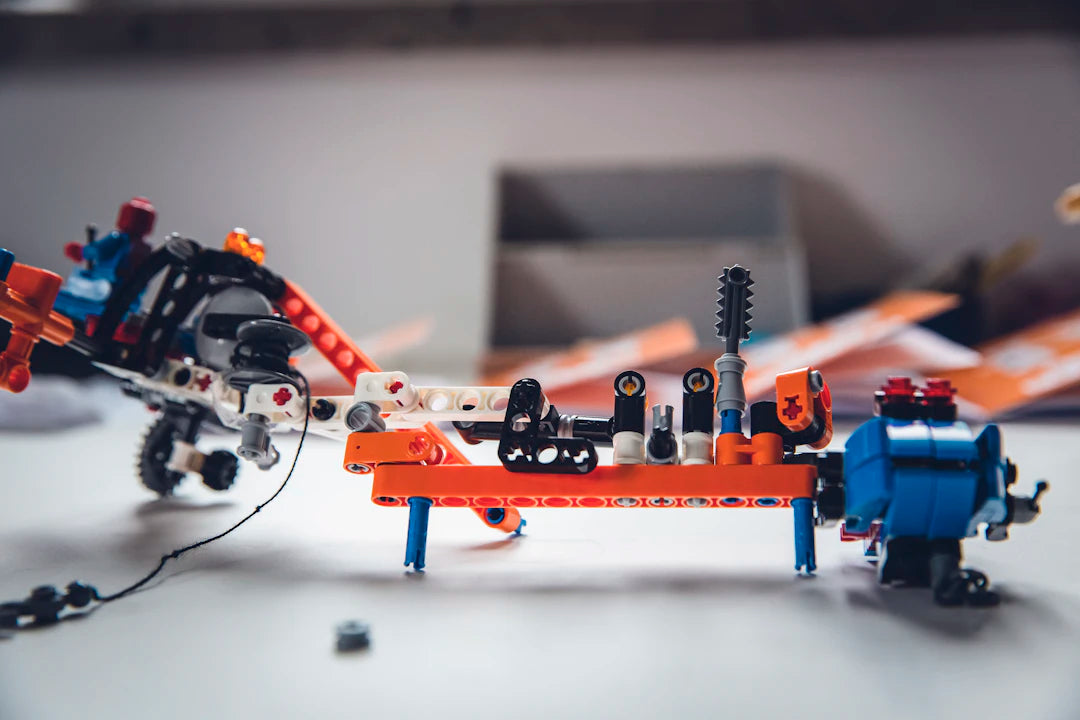(Valid for one time)

Evaluating the Educational Value of Toys: A Parent’s Guide
Frequently Asked Questions
1. What are educational toys?
2. How can I determine if a toy is age-appropriate for my child?
3. What are some examples of toys that promote cognitive development?
4. How do toys contribute to a child's social and emotional learning?
5. What safety standards should I consider when selecting toys?
As parents, we constantly strive to provide the best for our children, and that includes the toys they play with. While most toys may seem fun, there’s much more to them than mere entertainment. Understanding how to evaluate the educational value of toys can help you make informed choices that foster your child's development. In this guide, we will explore various aspects to consider when selecting toys that educate while they entertain.
Understanding Educational Toys
The term "educational toys" is commonly used, but what does it truly mean? Educational toys are designed to stimulate learning through play. They can develop physical skills, enhance creativity, foster social interactions, and build cognitive abilities. Here’s how to assess the educational value of the toys available on the market:
Consider the Age Appropriateness
One of the first factors to consider when evaluating toys is their age appropriateness. Toys should cater to your child’s developmental stage, ensuring they are neither too simple nor overly complex. Here’s how age-appropriate toys contribute to learning:
- Infants and Toddlers: Soft toys with different textures, colours, and sounds can stimulate sensory development.
- Preschoolers: Building blocks and simple puzzles promote problem-solving and fine motor skills.
- School-Aged Children: Science kits and board games introduce strategic thinking and cooperation.
Learning Through Play
Toys that encourage imaginative and creative play help children to express themselves, explore their surroundings, and develop critical thinking skills. When assessing a toy's educational value, consider the following:
- Open-Ended Toys: Toys like building blocks allow children to create, explore, and innovate.
- Role Play Toys: Dress-up costumes and play kitchens encourage social interaction and language development.
The Role of Cognitive Development
Cognitive development is essential during the early years, and the right toys can support this growth. Here are some categories of toys that encourage cognitive skills:
Puzzles and Problem Solving
Puzzles are a fantastic way to enhance problem-solving abilities. They challenge children to think critically and help improve their memory and concentration skills. When selecting puzzles, consider:
- The complexity of the puzzle
- The number of pieces
- Thematic relevance
STEM Toys
STEM (Science, Technology, Engineering, Mathematics) toys promote interest in these critical fields. These toys often incorporate building sets, science kits, and robotics, allowing children to experiment and learn while having fun. Here are some benefits of STEM toys:
- Encourages curiosity
- Promotes logical reasoning
- Develops perseverance through challenges
Social and Emotional Learning
Aside from cognitive development, toys play a significant role in a child's social and emotional learning. Interactive toys require children to engage with others, promoting teamwork and empathy. Here’s how to evaluate this aspect:
Team-Based Games
Games that require group participation can create opportunities for children to practice teamwork. Consider board games or collaborative challenges where success relies on social interaction. These can teach valuable lessons about sharing, negotiating, and working together toward a common goal.
Emotional Role-Play
Toys that encourage children to engage in role play can help them understand emotions and develop empathy. Playsets that mimic real-life situations provide context for children to act out feelings and resolve conflicts in a safe environment.
Physical Development Through Play
Physical development is crucial for children of all ages, and many toys can aid in this area. When looking for toys that support physical skills, consider:
Fine Motor Skills
Toys that involve grasping, stacking, or manipulating help refine fine motor skills. Items like stacking rings or shape sorters are excellent for younger children as they learn to control their movements.
Gross Motor Skills
For developing gross motor skills, look for toys that encourage movement: bicycles, balls, or climbing structures promote physical activity and help in the development of coordination and balance.
Safety First: Assessing Toy Safety Standards
Always prioritise safety when choosing toys for your children. Beyond educational value, the construction and materials of the toy are crucial considerations. Ensure that the toys comply with safety standards and do not contain harmful substances. Here’s a quick checklist for assessing toy safety:
- Check for sharp edges or small parts that could pose choking hazards.
- Ensure non-toxic materials are used in construction.
- Look for age recommendations on the packaging.
Encouraging Lifelong Learning
One of the parents' ultimate desires is to encourage a love of learning that lasts a lifetime. The right toys can foster curiosity and zest for knowledge. Consider these points when selecting educational toys:
- Diversity of Learning: Choose toys that expose your child to different subjects—art, science, maths, and geography.
- Encouragement of Questions: Select toys that prompt curiosity and invite children to ask "why" and "how".
- Adaptability: Look for toys that grow with your child, allowing them to engage in increasingly complex challenges as they develop.
Paving the Path for Future Learning
In the quest to find the perfect toys, don't overlook the importance of quality over quantity. Fostering an environment where children feel comfortable to explore, create, and learn is vital. By focusing on educational toys, you can pave the way for future learning experiences. Remember to regularly reassess your selections as your child grows, ensuring their play remains enriching and educational.
Finally, allow your children the space to navigate their interests. Sometimes the simplest toys can spark the brightest imaginations and set them on exciting educational journeys. As you sift through the vast array of toys available, keep this guide in mind to help you choose wisely.

Leave a comment